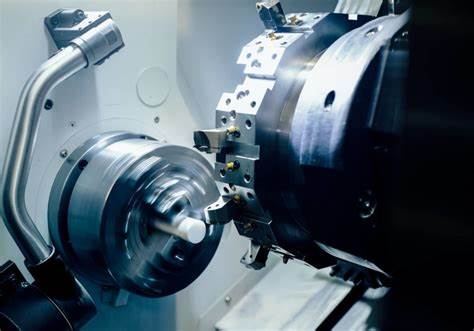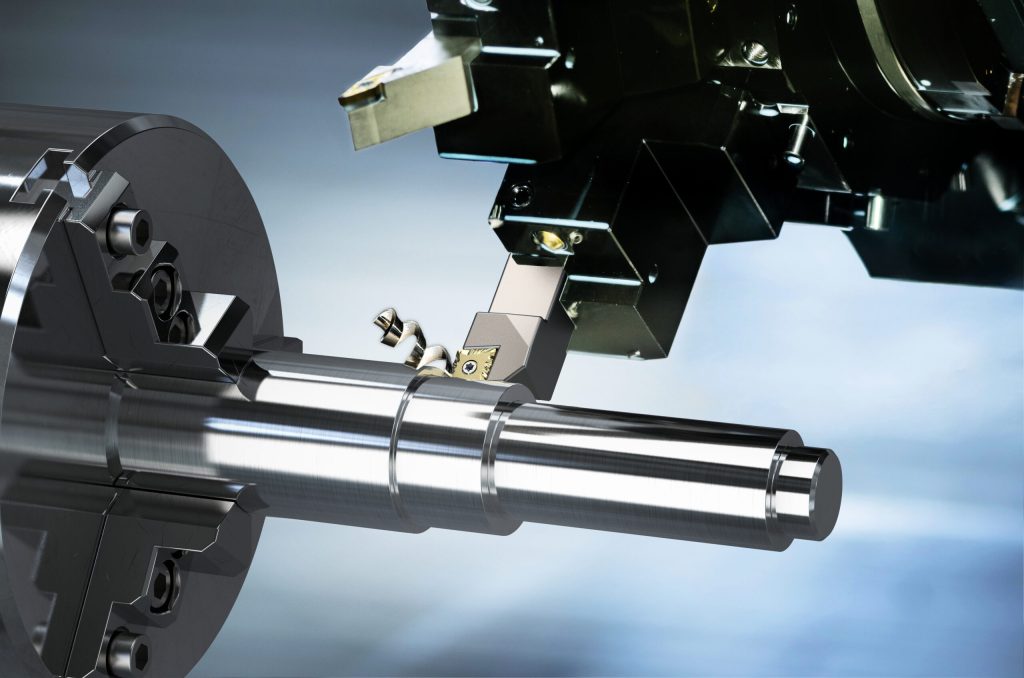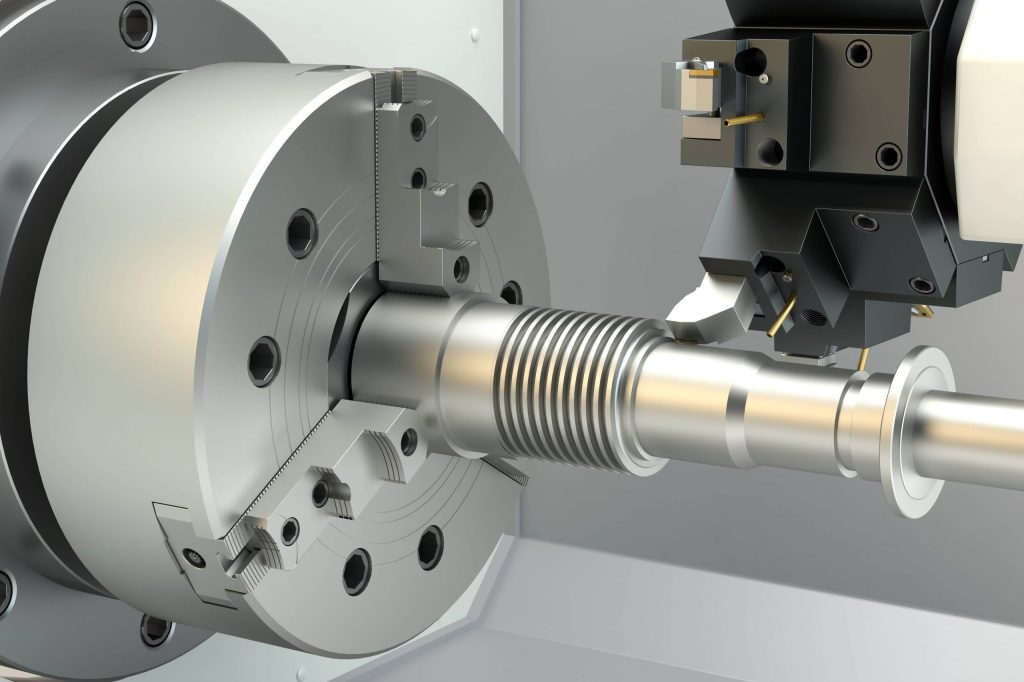I. Introduction to CNC Turning
A. Definition of CNC Turning:
CNC turning, also known as computer numerical control turning, is a manufacturing process that involves the use of computer-controlled lathes to produce parts and components. In this process, a computer program is used to direct the movement of the cutting tool and produce a desired shape or geometry.
B. Advantages of CNC Turning:
CNC turning offers several advantages over traditional turning methods, including increased accuracy, improved consistency, and reduced production time. Additionally, CNC turning eliminates the need for manual labor and reduces the number of errors and mistakes, making it a more cost-effective manufacturing method. The high degree of precision and repeatability offered by CNC turning also makes it ideal for producing complex and critical components for various industries, such as aerospace, medical, and automotive.
II. Understanding the CNC Turning Process
A. Overview of the CNC Turning Process:
The CNC turning process involves the use of a computer-controlled lathe to produce parts and components. This process starts with the creation of a computer-aided design (CAD) model, which is then used to generate a computer numerical control (CNC) program. This program is loaded into the CNC machine, which uses it to control the movement of its cutting tool and produce the desired part or component.
B. Steps involved in CNC Turning:
The steps involved in CNC turning are as follows:
1.Design and modeling: The creation of a CAD model of the part or component to be produced.
2.CNC programming: The generation of a CNC program from the CAD model.
3.Tool selection: The selection of the appropriate cutting tool for the job.
4.Machine setup: The preparation of the CNC machine for the turning process.
5.Turning: The actual process of producing the part or component, guided by the CNC program.
6.Inspection and quality control: The inspection of the finished product to ensure it meets the desired specifications and quality standards.
C. Key Components of CNC Turning:
The key components of CNC turning include:
1.CNC machine: The computer-controlled lathe that performs the turning process.
2.Cutting tool: The tool used to remove material from the workpiece.
3.CAD software: The software used to create the CAD model of the part or component.
4.CNC software: The software used to generate the CNC program from the CAD model.
5.Workpiece: The material being turned to create the part or component.
6.Control panel: The interface used to control and monitor the turning process.

III. Types of CNC Turning
A. Lathe CNC Turning:
Lathe CNC turning is the traditional type of CNC turning, which involves the use of a computer-controlled lathe to produce cylindrical parts and components. This type of CNC turning is suitable for producing a wide range of parts, including shafts, spindles, and other cylindrical components.
B. Swiss-style CNC Turning:
Swiss-style CNC turning is a specialized type of CNC turning that is used to produce small, complex parts and components. This type of CNC turning is characterized by its ability to perform multiple operations, such as milling and drilling, in a single machine setup. This makes Swiss-style CNC turning ideal for producing small and intricate parts for the medical and aerospace industries.
C. Automated CNC Turning:
Automated CNC turning is a type of CNC turning that involves the use of robotic systems to automate the machining process. This type of CNC turning is used to produce high-volume parts and components and is characterized by its high speed and efficiency. Automated CNC turning is particularly useful for producing large quantities of parts for the automotive and industrial industries.
IV. Applications of CNC Turning
A. Aerospace CNC Turning:
Aerospace CNC turning is used to produce parts and components for aircraft and spacecraft. The high degree of precision and accuracy offered by CNC turning makes it ideal for producing complex and critical components for the aerospace industry, such as engine parts, landing gear, and cockpit controls.
B. Medical CNC Turning:
Medical CNC turning is used to produce parts and components for the medical device industry, such as surgical instruments, implants, and prosthetics. The high degree of precision and accuracy offered by CNC turning is essential for ensuring the safety and effectiveness of medical devices.
C. Automotive CNC Turning:
Automotive CNC turning is used to produce parts and components for the automotive industry, such as engine components, suspension parts, and transmission components. The speed and efficiency of CNC turning make it ideal for producing high-volume parts for the automotive industry.
D. Industrial CNC Turning:
Industrial CNC turning is used to produce parts and components for a wide range of industrial applications, including machinery, equipment, and consumer goods. The versatility and efficiency of CNC turning make it ideal for producing parts for various industries, including electrical, electronics, and consumer goods.
V. Choosing the Right CNC Turning Services
A. Factors to Consider:
When choosing CNC turning services, it is important to consider several key factors, including:
1.Quality: The quality of the turned parts and components is of utmost importance, and it is important to choose a service provider that can consistently deliver high-quality results.
2.Experience: It is important to choose a service provider with extensive experience in CNC turning, as this will ensure that they have the expertise to handle even the most complex turning projects.
3.Equipment: The quality of the turning equipment used by the service provider is also important, as it will directly impact the quality of the turned parts.
4.Lead time: The lead time for delivery of the turned parts is also an important consideration, as it can impact the overall timeline for a project.
5.Cost: The cost of the turning services is also a key consideration, and it is important to choose a service provider that offers competitive pricing.
B. How to Choose the Right Service Provider:
To choose the right CNC turning service provider, it is important to do research and compare several options. This can be done by reviewing their portfolio, reading customer reviews and testimonials, and asking for references. Additionally, it is a good idea to request quotes from several different service providers and compare the cost, lead time, and quality of each to determine which one is the best fit for your needs.
C. Cost Considerations:
The cost of CNC turning services can vary depending on several factors, including the complexity of the turning project, the type of material used, and the size of the order. It is important to consider the overall cost of the turning services, including any additional fees for tooling, setup, or inspection, when choosing a service provider. Additionally, it is a good idea to request a detailed quote that outlines all of the costs associated with the turning project, so that you have a clear understanding of the total cost.
D.V1 Machining:
A quality CNC Turning Services company, has cooperated with many companies in the United States, Germany, and Canada for up to 10 years. Fast DMF assessment, and efficient service, is the beginning of our cooperation.
Advantages:
- V1 have professional production equipment and testing equipment.
- High quality management system including ISO 9001:2015, ISO 14001:2015, IATF 16949 certification to ensure high level and high precision parts.
- Capable of machining high precision parts with tolerances up to 0.001 mm
- We have advanced production management and order tracking system to ensure efficient production, full tracking and on-time delivery of orders.

VI. Conclusion
A. Summary of CNC Turning:
CNC turning is a highly precise and efficient method of producing parts and components for a wide range of industries, including aerospace, medical, automotive, and industrial. The process involves the use of computer-controlled lathes, which are guided by computer software, to produce parts with high accuracy and consistency. CNC turning offers several advantages over traditional turning methods, including increased accuracy, improved consistency, and reduced production time.
B. Future of CNC Turning:
The future of CNC turning looks bright, as advancements in technology continue to drive innovation in the manufacturing industry. The increasing demand for more sophisticated and complex parts and components will likely lead to the development of new and more advanced CNC turning machines, as well as the integration of new materials and production methods.
C. Final Thoughts:
CNC turning is a critical component of modern manufacturing, and its importance will continue to grow in the coming years. Choosing the right service provider is essential for ensuring that your turning projects are completed on time, within budget, and to the highest quality standards. With the right service provider and the latest technology, CNC turning has the potential to revolutionize the way products are made, and it will continue to play a vital role in the future of manufacturing.













